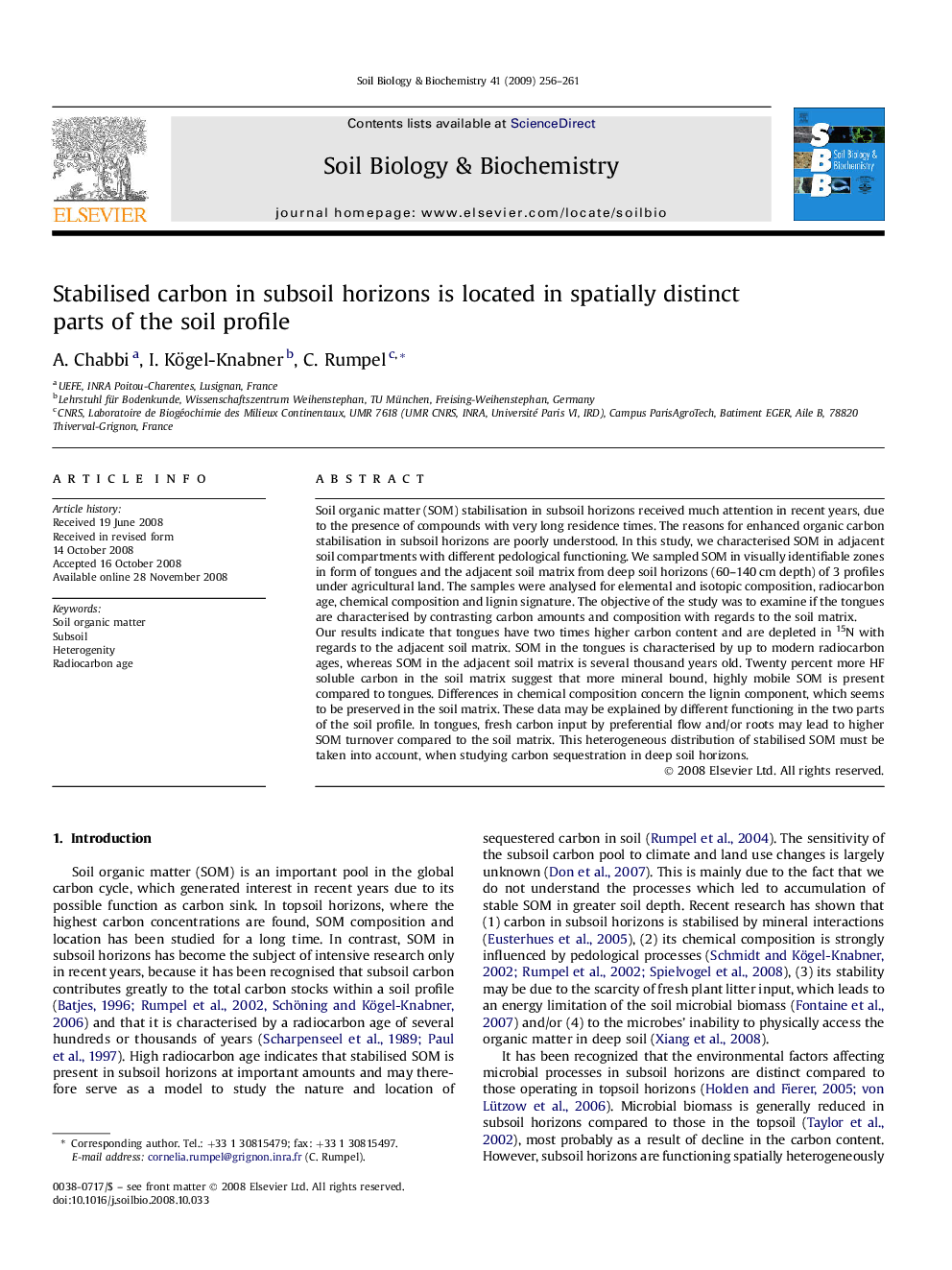| Article ID | Journal | Published Year | Pages | File Type |
|---|---|---|---|---|
| 2026125 | Soil Biology and Biochemistry | 2009 | 6 Pages |
Soil organic matter (SOM) stabilisation in subsoil horizons received much attention in recent years, due to the presence of compounds with very long residence times. The reasons for enhanced organic carbon stabilisation in subsoil horizons are poorly understood. In this study, we characterised SOM in adjacent soil compartments with different pedological functioning. We sampled SOM in visually identifiable zones in form of tongues and the adjacent soil matrix from deep soil horizons (60–140 cm depth) of 3 profiles under agricultural land. The samples were analysed for elemental and isotopic composition, radiocarbon age, chemical composition and lignin signature. The objective of the study was to examine if the tongues are characterised by contrasting carbon amounts and composition with regards to the soil matrix.Our results indicate that tongues have two times higher carbon content and are depleted in 15N with regards to the adjacent soil matrix. SOM in the tongues is characterised by up to modern radiocarbon ages, whereas SOM in the adjacent soil matrix is several thousand years old. Twenty percent more HF soluble carbon in the soil matrix suggest that more mineral bound, highly mobile SOM is present compared to tongues. Differences in chemical composition concern the lignin component, which seems to be preserved in the soil matrix. These data may be explained by different functioning in the two parts of the soil profile. In tongues, fresh carbon input by preferential flow and/or roots may lead to higher SOM turnover compared to the soil matrix. This heterogeneous distribution of stabilised SOM must be taken into account, when studying carbon sequestration in deep soil horizons.
